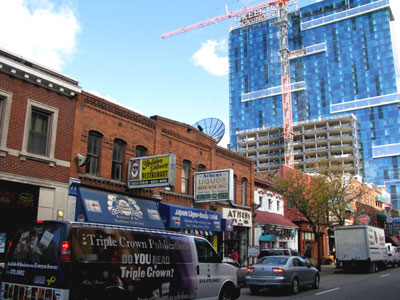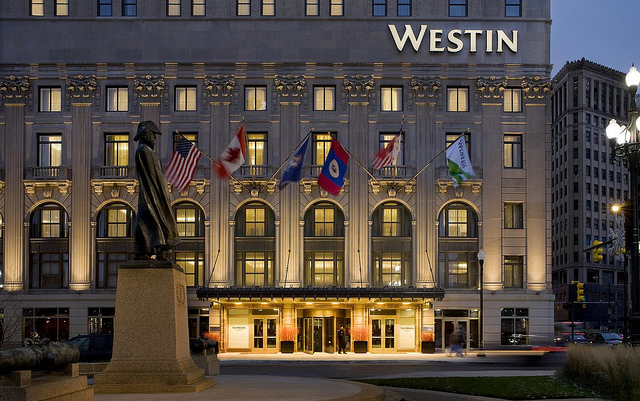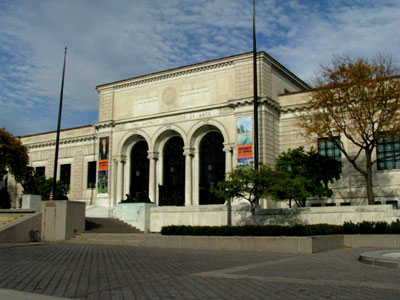As we pedaled against the wind we passed by several more Detroit landmarks – Cobo Arena, the Cobo Convention Centre and the Joe Louis Arena – home of the Detroit Red Wings. Leaving the downtown area behind we headed into southwest Detroit.

The oldest church in Corktown
The first neighbourhood that greeted us was Corktown, Detroit’s oldest neighbourhood, so named after the Irish immigrants from County Cork that settled here. The houses in this area date back to 1834 and feature nicely restored Victorian homes, many of them brightly painted. Corktown also has many cool gathering spots and eateries, including the funky Zeitgeist Gallery, a bar called Nemo’s which was voted No. 3 “perfect sports bar in the US by Sports Illustrated , and LJ.’s – a hip karaoke place, as well as a wide range of other diverse restaurants.

Colourful houses in Corktown
We snaked our way through this pleasant neighbourhood and crossed over a railway bridge that provided a perfect view of one of Detroit’s most stunning architectural structures: the Michigan Central Depot, also called the Michigan Central Station. Although now abandoned and in poor condition, the Michigan Central Station is a railroad station that was built in 1913 for the Michigan Central Railroad. Its main Beaux-Arts train station is flanked by an 18 storey office tower, a monumental building whose outline dominates South-West Detroit’s skyline. Due to its sheer size and its magnificent architectural detailing, the Michigan Central Depot is still one of Detroit’s most impressive buildings, despite its sad current state.

View of the Michigan Central Depot from the railroad bridge
Past the railroad bridge we arrived in Mexicantown, a vibrant neighbourhood that has undergone significant economic growth in the last few years. Kelly showed me the Michigan International Welcome Centre, a brand-new commercial development in close proximity to the Ambassador Bridge. 85 businesses will welcome visitors in The Mercado, and they will cater to locals and out-of-towners alike with a broad assortment of merchandise.

The Mexican Village Restaurant
Further west we cycled by a long strip of Mexican restaurants that include popular eateries such as Mexican Village, El Zocalo, Evie’s Tamales, Lupita’s and Xochimilco. A ride through this neighbourhood revealed an extensive collection of late Victorian homes fronted by large trees. The main streets in the area are Bagley Street and Vernor Street which are flanked by numerous storefronts and eateries.

Historic St. Anne De Detroit Catholic Church
Away from the main thoroughfares and tucked into the neighbourhood is St. Anne De Detroit Catholic Church, the eighth church in this location whose cornerstone was laid in 1886. The church was originally founded on July 26, 1701, two days after Antoine Mothe de la Cadillac (the founder of Detroit) and his French settlers arrived. Today it is the second oldest continuously operating Roman Catholic parish in the United States. Nowadays the congregation includes many Hispanic parishioners who come together to worship in this impressive Gothic Revival structure.

Kelli in front of the church portal
One stop on our bicycling tour included the Hotel Yorba, which inspired the hit single by Detroit garage rock band “The White Stripes”. Today this former hotel provides subsidized housing. We started cycling back to the main road and passed by Clark Park, a large public park on Detroit’s southwest side. Cycling back east on Vernor we saw another strip of Mexican-owned businesses.

Los Galanes




